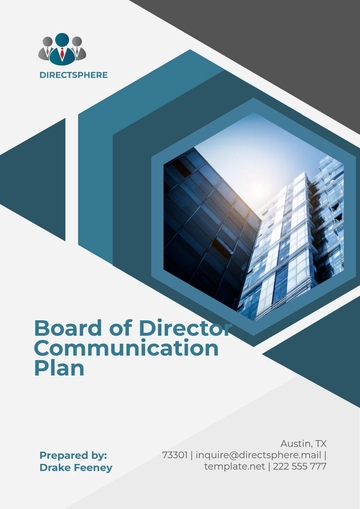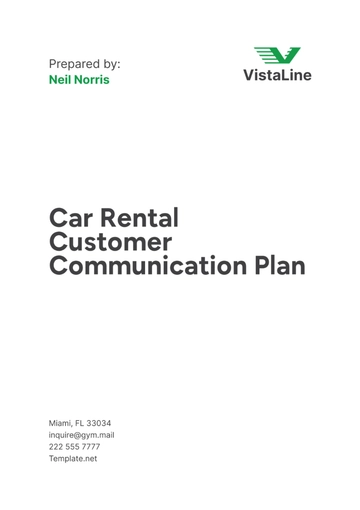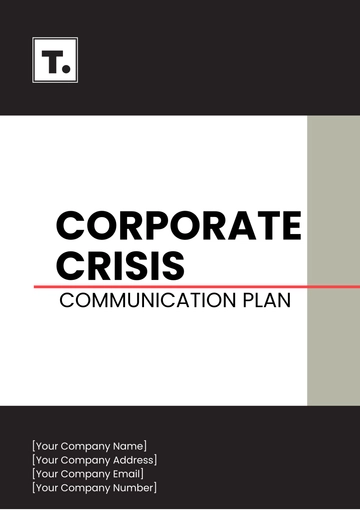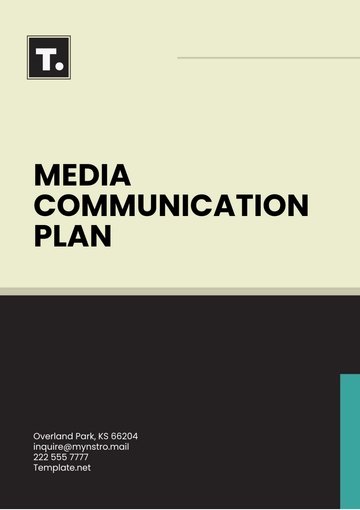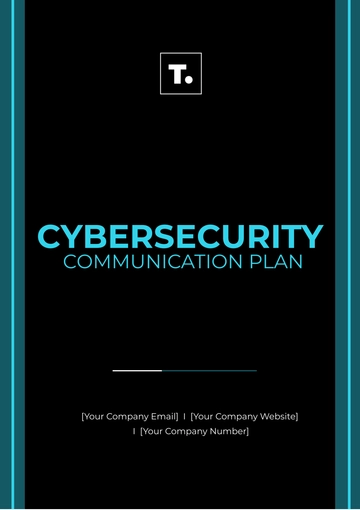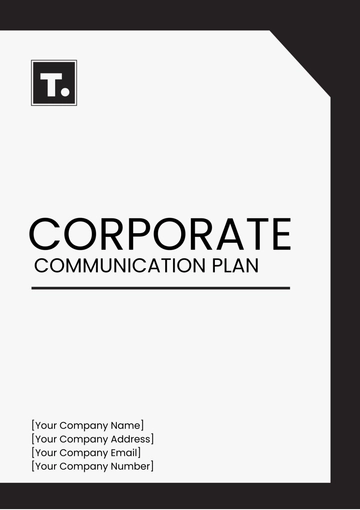Free Acquisition Communication Plan

Written by: [Your Name]
I. Introduction
At [Your Company Name], we recognize that effective communication is paramount during significant transitions, such as the acquisition of [Acquired Company Name]. Our communication plan is meticulously crafted to serve as a guiding framework, ensuring that every stakeholder involved in this process is well-informed, engaged, and supported. By fostering transparent communication channels, we aim to alleviate uncertainties and facilitate a seamless integration that upholds our shared values and goals.
II. Objectives
Provide Clear and Transparent Information: Transparency breeds trust. We commit to providing comprehensive information regarding the acquisition processes, ensuring that stakeholders have a complete understanding of the steps involved and the expected outcomes.
Consistent and Timely Updates: Timeliness is crucial in maintaining stakeholder engagement. We pledge to provide regular updates at key milestones throughout the acquisition journey, keeping all parties abreast of developments and milestones.
Facilitate Open and Effective Channels: Communication should flow freely. We endeavor to establish channels that encourage dialogue, feedback, and collaboration, fostering an environment where every voice is heard and valued.
Address and Mitigate Concerns: Acknowledging concerns is the first step to resolving them. We are committed to promptly addressing any uncertainties or anxieties that arise, proactively seeking solutions that prioritize the well-being and satisfaction of all stakeholders.
III. Key Stakeholders
A. Internal Stakeholders
Our Executive Team: The visionary leaders steering our organization towards success.
Middle Management: The backbone of our operational efficiency and team cohesion.
Employees of [Your Company Name] and [Acquired Company Name]: The heartbeat of our organizations, whose dedication and expertise drive our collective growth.
HR Department: The guardians of our workforce's welfare, entrusted with nurturing a supportive and inclusive workplace culture.
IT Department: The architects of our technological infrastructure, ensuring seamless connectivity and efficiency across all platforms.
B. External Stakeholders
Investors: Our valued partners in growth and innovation, whose confidence and support propel us forward.
Clients/Customers: The lifeblood of our business, whose satisfaction and loyalty fuel our commitment to excellence.
Suppliers/Partners: The collaborators in our supply chain ecosystem are united in our pursuit of mutual success and sustainability.
Regulatory Bodies: The guardians of compliance and integrity, guiding our operations within the bounds of ethical and legal standards.
Media Outlets: The conduits of public perception, shaping our narrative and reputation in the global marketplace.
IV. Communication Channels
Selecting the appropriate communication channels is essential to deliver messages effectively and efficiently. Below are the chosen channels for this acquisition communication plan:
A. Internal Communication Channels
Email Announcements: Direct and immediate communication for disseminating crucial updates and announcements.
Intranet Portals: A centralized hub for accessing resources, policies, and real-time information relevant to the acquisition.
Internal Newsletters: Periodic newsletters highlighting milestones, achievements, and important updates related to the acquisition.
Team Meetings/Video Conferences: Interactive platforms for fostering collaboration, brainstorming, and addressing queries or concerns in real-time.
Internal Memos: Concise and targeted messages for communicating specific directives, policies, or procedural changes.
B. External Communication Channels
Press Releases: Official statements distributed to media outlets and stakeholders to announce key developments and milestones.
Company Website: A comprehensive online platform featuring acquisition-related information, FAQs, and updates for public consumption.
Social Media Platforms: Interactive channels for engaging with stakeholders, sharing insights, and soliciting feedback in real-time.
Investor Calls/Meetings: Dedicated sessions for communicating acquisition strategies, performance updates, and addressing investor queries.
Client/Customer Newsletters: Tailored communications aimed at informing and reassuring clients/customers about the acquisition's impact on products, services, and support.
V. Communication Timing and Frequency
Effective communication timing and frequency will help manage expectations and keep all stakeholders consistently informed throughout the acquisition process.
Communication Milestone | Timing | Frequency | Channel |
|---|---|---|---|
Initial Announcement | At the start of the acquisition | Once | Internal Emails, Press Releases |
Monthly Update | Monthly | Monthly | Newsletters, Intranet Updates |
Key Milestone Achieved | As milestones are achieved | Per Milestone | Emails, Press Releases |
Feedback Sessions | Throughout the acquisition | Bi-weekly | Meetings, Surveys |
VI. Roles and Responsibilities
A. Executive Team
Oversee Communication Strategies: Our executive leaders play a pivotal role in shaping the overarching communication strategy, ensuring alignment with the strategic objectives of the acquisition.
Approvals and Endorsements: They provide guidance and approvals for key communication initiatives, ensuring consistency, accuracy, and adherence to organizational values.
B. Communication Team
Strategy Development: Our dedicated communication team is responsible for crafting robust communication plans tailored to the unique dynamics of the acquisition.
Implementation and Monitoring: They oversee the execution of communication initiatives, monitoring feedback and engagement metrics to gauge the effectiveness and identify areas for improvement.
Accuracy and Timeliness: Ensuring that all information disseminated is accurate, timely, and aligned with the overarching communication strategy.
C. HR Department
Employee Support and Engagement: Our HR department serves as a trusted resource for employees, addressing concerns, providing guidance, and facilitating a smooth transition process.
Communication Liaison: They act as a bridge between management and employees, conveying updates, changes, and reassurances in a clear and empathetic manner.
D. IT Department
Technological Support: Our IT department ensures the seamless operation of communication channels and platforms, addressing any technical glitches or infrastructure requirements promptly.
Data Security and Compliance: They uphold data security standards and compliance protocols, safeguarding sensitive information exchanged during the acquisition process.
VII. Feedback Mechanisms
Feedback mechanisms ensure concerns are heard and addressed promptly. Implementing these mechanisms helps facilitate effective two-way communication.
A. Internal Feedback Channels
Anonymous Surveys: Providing a safe and confidential avenue for employees to share their concerns, suggestions, and feedback anonymously.
Focus Groups: Facilitate structured discussions among cross-functional teams to gather insights, identify pain points, and brainstorm solutions collaboratively.
Employee Feedback Forms: Regular solicitation of feedback through surveys or forms, covering various aspects of the acquisition process, organizational culture, and employee well-being.
B. External Feedback Channels
Client/Customer Surveys: Collect feedback from clients/customers regarding their perceptions, expectations, and concerns related to the acquisition's impact on products or services.
Investor Feedback Sessions: Hosting dedicated sessions or forums for investors to voice their opinions, ask questions, and provide feedback on the acquisition strategy and execution.
Public Feedback Forms on [Your Company Website]: Offering an open channel for stakeholders to submit feedback, inquiries, or suggestions via the company website, demonstrating a commitment to transparency and responsiveness.
VIII. Monitoring and Evaluation
A. Metrics and KPIs
To measure the effectiveness of the communication plan, establish relevant metrics such as employee engagement levels, feedback response rates, and media sentiment analysis.
B. Continuous Improvement
Based on the evaluation, adapt communication strategies and address any identified gaps to improve the overall communication approach throughout the acquisition process.
- 100% Customizable, free editor
- Access 1 Million+ Templates, photo’s & graphics
- Download or share as a template
- Click and replace photos, graphics, text, backgrounds
- Resize, crop, AI write & more
- Access advanced editor
Enhance and Discover the Acquisition Communication Plan Template from Template.net! Crafted for seamless strategy implementation, it's editable and customizable to suit your unique needs. With the convenience of our Ai Editor Tool, streamline your communication efforts effortlessly. Elevate your acquisition game with this versatile, user-friendly solution. Elevate your acquisitions with precision and ease.



